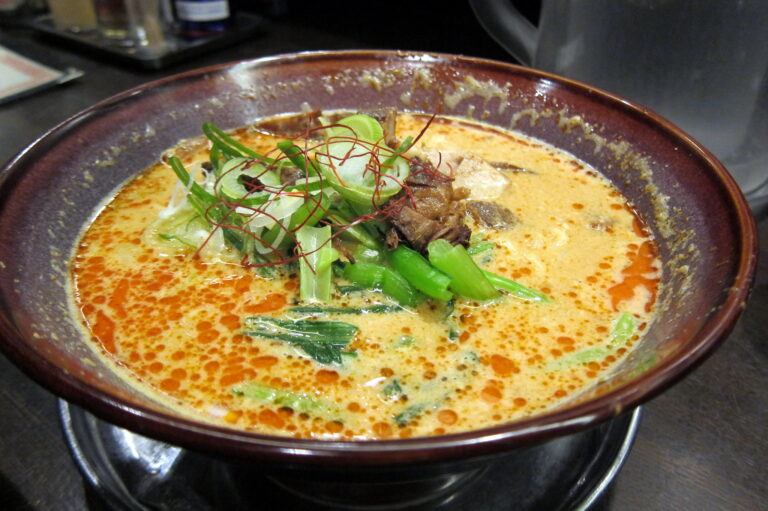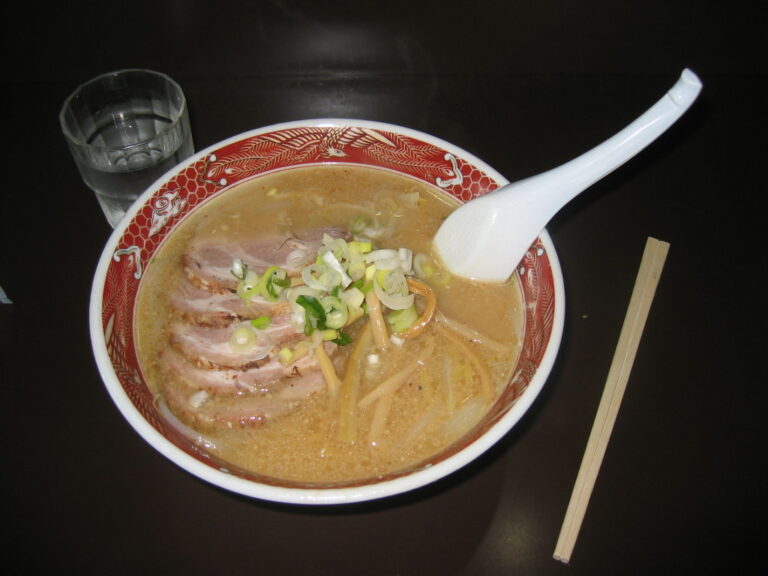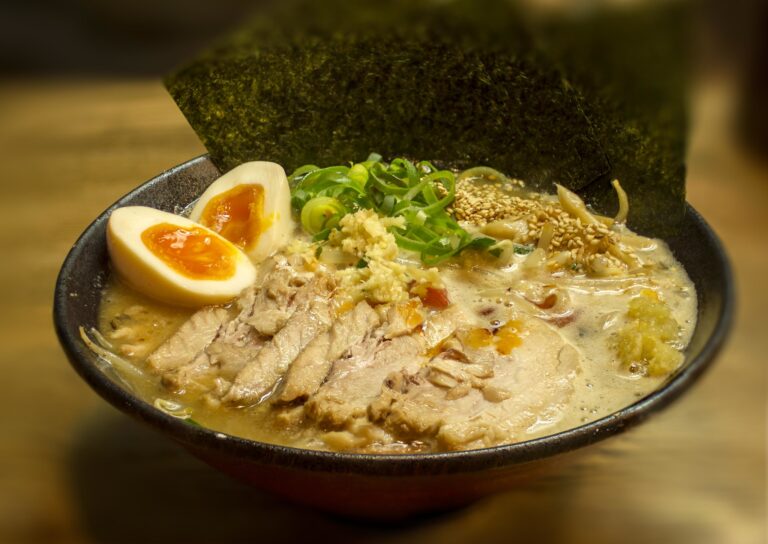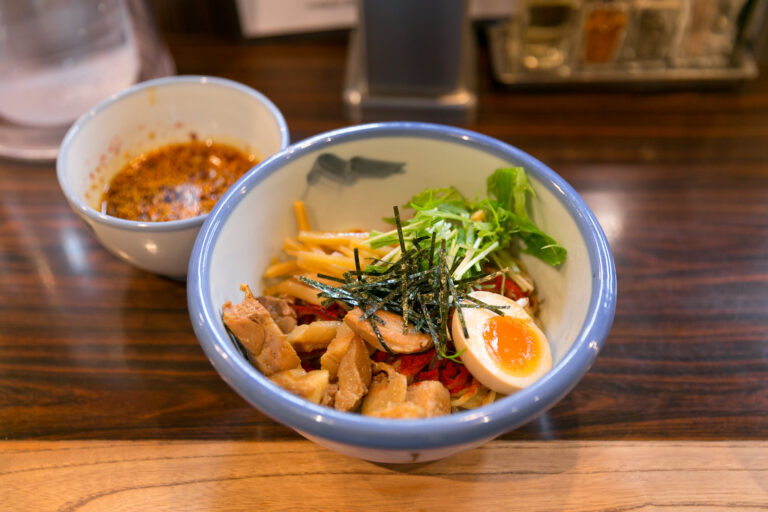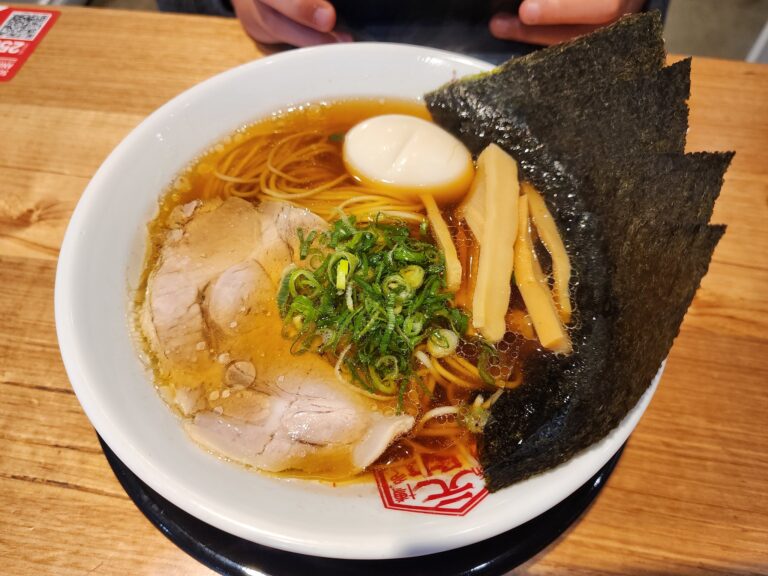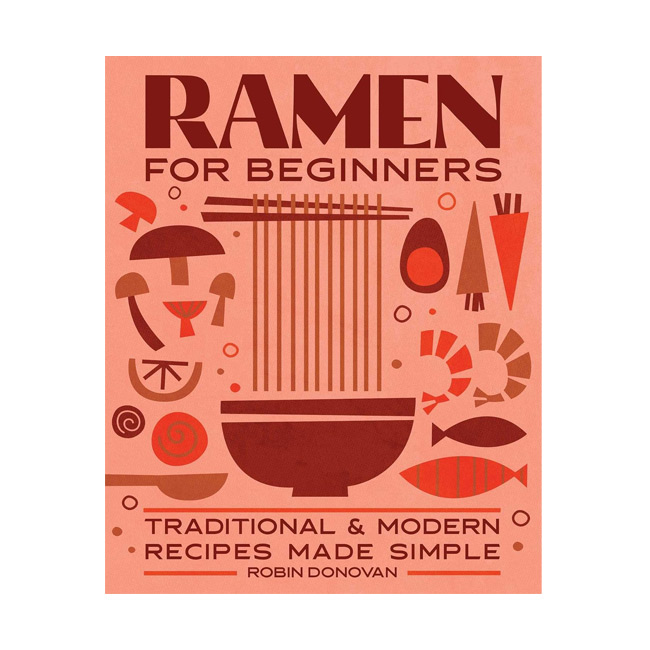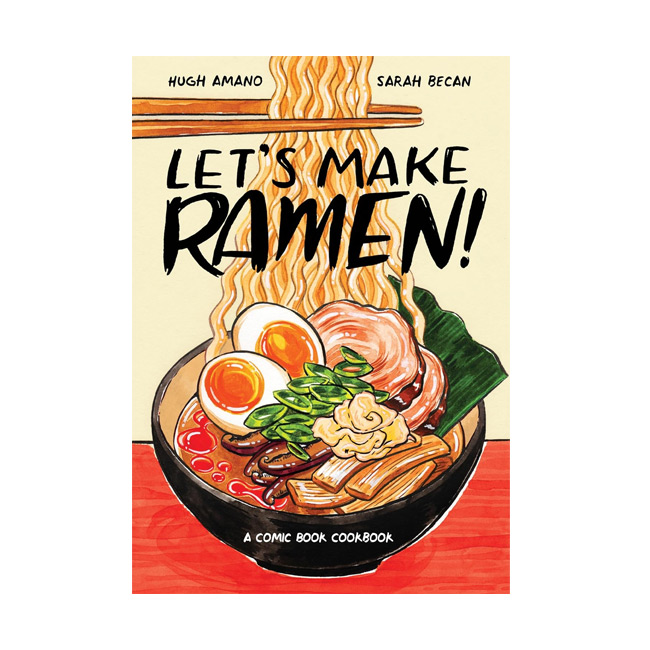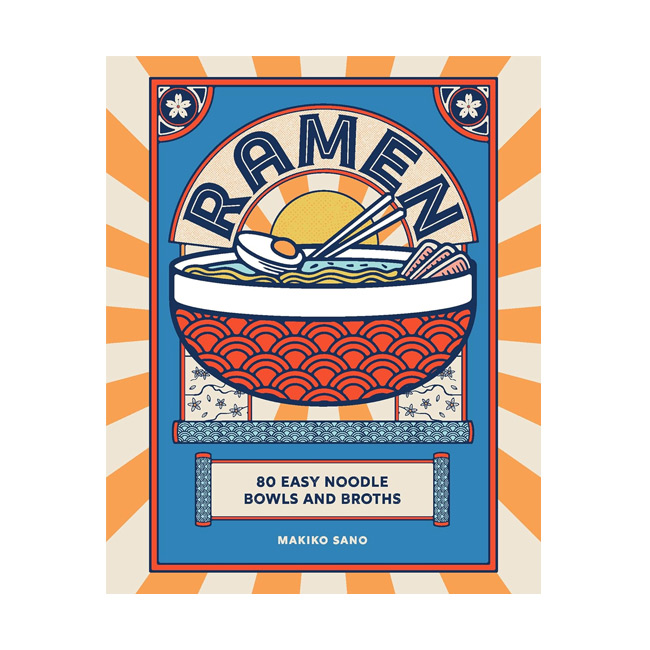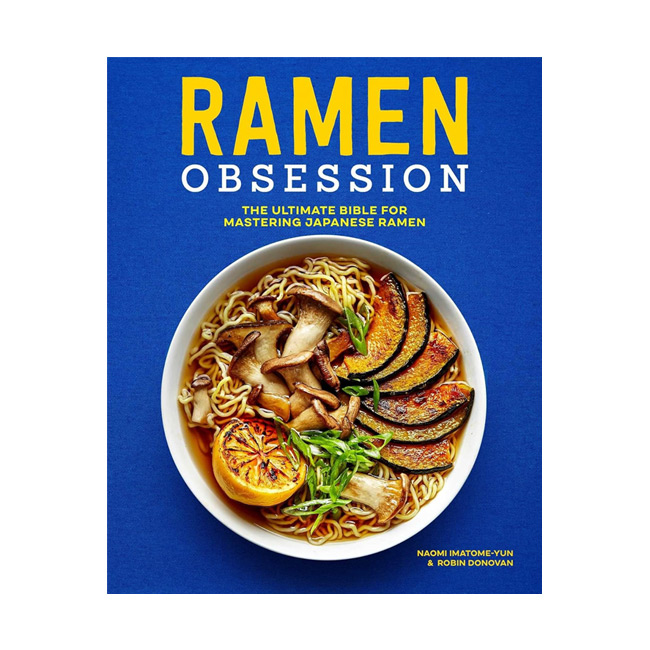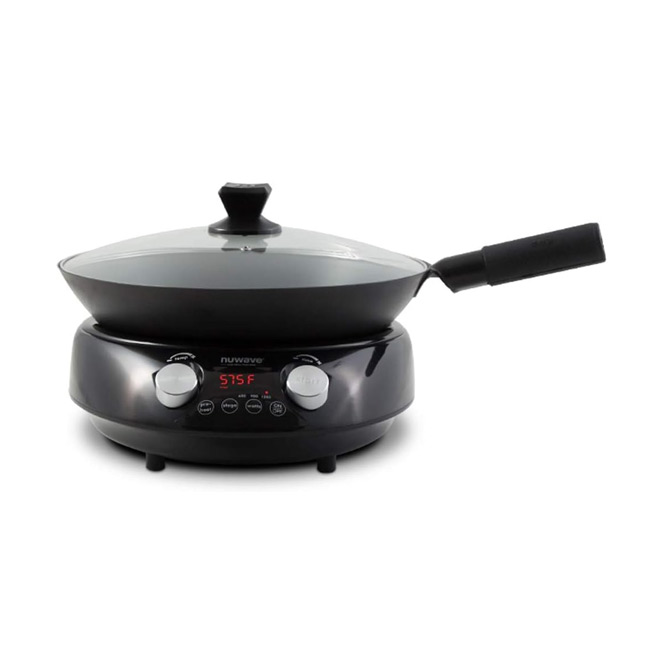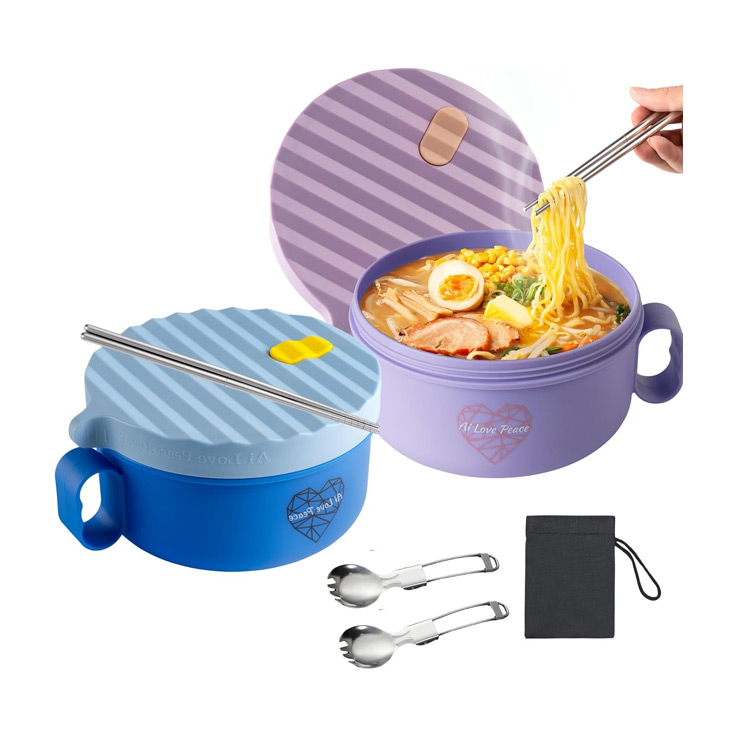Tsukemen ramen offers a unique and interactive dining experience that sets it apart from traditional ramen. This style of ramen features noodles served separately from the broth, allowing diners to dip each bite into a rich, concentrated sauce. The result is a dish where the flavors are intensely savory, with each bite delivering a burst of umami.
Tsukemen is particularly appealing during warmer months, as the noodles are typically served cool, providing a refreshing contrast to the hot, flavorful dipping broth. This combination makes tsukemen a popular choice for ramen enthusiasts looking for a different and highly flavorful experience.
TSUKEMEN Ramen
Broth
The broth for tsukemen is thick, rich, and intensely flavored. Made from pork bones, chicken, dried fish, and a variety of seasonings, the broth is simmered for hours to extract maximum flavor.
This process creates a deeply umami and savory base, often enhanced with soy sauce, mirin, and a touch of vinegar for balance. The result is a concentrated dipping sauce that clings to the noodles, ensuring every bite is packed with robust flavor.
TSUKEMEN Ramen
Noodles
Tsukemen noodles are typically thicker and chewier than those used in traditional ramen. Served cold or at room temperature, they provide a refreshing contrast to the hot dipping sauce. The thickness of the noodles allows them to hold more sauce, enhancing the overall flavor and texture.
Their firm and bouncy consistency ensures they don’t become soggy, making each dip into the broth a delightful experience. Cooking the noodles to an al dente texture is crucial for maintaining their chewiness.
TSUKEMEN Ramen
Toppings
Common toppings for tsukemen include slices of chashu (braised pork belly), ajitsuke tamago (marinated soft-boiled egg), and menma (bamboo shoots). Additional toppings often include nori (seaweed), chopped green onions (negi), and sometimes a sprinkle of sesame seeds.
Some variations might feature fresh vegetables like cucumbers or radishes for added crunch. These toppings are usually served on the side or arranged on top of the noodles, allowing diners to customize each bite according to their preferences.
A brief history of TSUKEMEN Ramen
Tsukemen ramen was created in the 1960s by Kazuo Yamagishi, the founder of the Taishoken ramen shop in Tokyo. Seeking to offer a different ramen experience, Yamagishi developed the dipping style to provide a new way to enjoy the intense flavors of ramen.
Tsukemen quickly gained popularity, particularly during the hot summer months, as the cool noodles provided a refreshing alternative to traditional hot ramen. Over time, tsukemen has become a beloved staple in the ramen world, with many variations and adaptations appearing in ramen shops across Japan and internationally.
Today, it is celebrated for its unique approach to ramen, offering a customizable and deeply flavorful dining experience.
TSUKEMEN Ramen recipe
Ingredients For the Broth:
- 4 cups chicken stock
- 2 cups dashi stock
- 1/4 cup soy sauce
- 2 tablespoons mirin
- 1 tablespoon sake
- 1 tablespoon rice vinegar
- 1 onion, halved
- 3 cloves garlic, smashed
- 1-inch piece ginger, sliced
- 1 tablespoon sesame oil
Ingredients For the Toppings:
- 4 slices chashu (braised pork belly)
- 4 soft-boiled eggs (ajitsuke tamago)
- 1 cup menma (bamboo shoots)
- 1 sheet nori (seaweed), cut into strips
- 2 green onions (negi), chopped
- 1 tablespoon sesame seeds
For the Noodles:
- 4 servings of fresh or dried ramen noodles
Instructions:
Prepare the Dipping Broth:
- In a large pot, heat the sesame oil over medium heat.
- Add the garlic and ginger, and sauté until fragrant.
- Add chicken stock, dashi stock, onion, soy sauce, mirin, sake, and rice vinegar.
- Bring to a boil, then reduce heat and simmer for 30 minutes.
- Strain the broth to remove solids and keep warm.
Prepare the Noodles:
- Cook the ramen noodles according to the package instructions.
- Drain and set aside.
Prepare the Toppings:
- Slice the chashu and prepare the soft-boiled eggs.
- Arrange menma, nori strips, chopped green onions, and sesame seeds in small bowls.
Assemble the Ramen:
- Divide the cooled noodles among four serving plates.
- Pour the hot dipping broth into four small bowls.
- Arrange the chashu, soft-boiled eggs, and other toppings alongside the noodles.
Serve the ramen hot and enjoy!

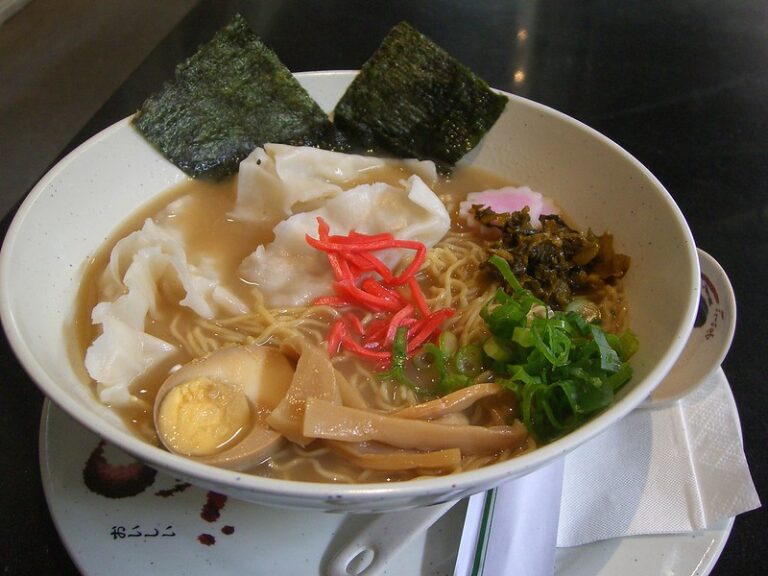


![Types of Ramen: Hakata Ramen. Image courtesy of [cipher] via Flickr Commons.](https://ramendatabase.com/wp-content/uploads/2024/06/Types-of-Ramen_Hakata-Ramen-768x510.jpg)

